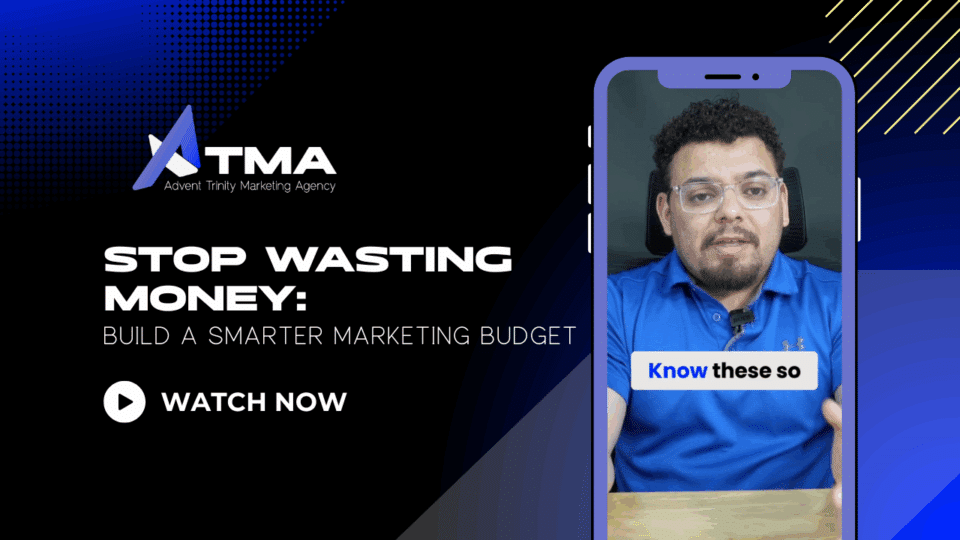
The Challenge of Twitter’s Rebrand to X: What You Need to Know About Rebranding
October 8, 2023
How to Get More Followers on Instagram
October 24, 2023How to Determine Your Budget for Digital Ads
Learn how to set your digital ad budget effectively. From business goals to financial evaluation, this guide covers it all. Boost ROI and stay competitive.
Determining your budget for digital ads is crucial to your overall marketing strategy. In this guide, we’ll delve into how to make these key financial decisions while keeping your business goals in mind.
The Fundamentals of Digital Ads
Before we jump into budgeting, let’s quickly cover what digital advertising is all about. You’ve got multiple avenues: PPC (Pay-Per-Click), social media ads, display ads, and even video ads. Each has its own cost structure and return on investment (ROI). Now, let’s get into how to budget for these.
Understand Your Business Goals: SMART Examples Included
When it comes to digital advertising, your budget isn’t a number you pull out of thin air. It’s intrinsically tied to your business goals. To determine how much you should allocate for ads, let’s start by setting these objectives using the SMART framework, an acronym for Specific, Measurable, Achievable, Relevant, and Time-bound goals. Here are some examples:
Specific
A vague goal like “I want more sales” won’t cut it. Get specific. For instance, aim to “increase online sales of winter jackets by 20%.”
Measurable
Incorporate metrics into your goals to track performance. If your goal is to enhance brand awareness, use indicators such as website visits, average session durations, or social media engagement rates.
Achievable
Set goals within reach. If your website currently experiences 200 visits a day, aiming for 5,000 daily visits in one month could set you up for failure. A more achievable goal might be a 25% increase in daily visits over the next quarter.
Relevant
Your goals must align with broader business objectives and the resources you have available. If you’re a new e-commerce startup, focusing on customer retention might be less relevant than driving initial sales.
Time-bound
Every goal needs a deadline. Instead of saying, “I want to reach 5,000 subscribers,” say, “I aim to reach 5,000 subscribers by the end of Q3.”
SETTING SMART GOALS FOR THE NEW YEAR
Applying SMART Goals to Digital Ads Budgeting
So, how does this connect to your ad budget? Let’s take the example of aiming to “increase online sales of winter jackets by 20% by the end of November.” Your budget allocation might focus more on promotional strategies as winter approaches. You may choose to divert more funds into Google Shopping ads, PPC ads for keywords related to winter jackets, or even social media ads targeting a demographic that lives in colder regions.
By establishing SMART goals, you can create a budget that directly serves these objectives, ensuring that every dollar you spend is a strategic investment toward your business growth.
Here are some common business goals you can achieve through digital advertising:
- Drive Online Sales: The most direct goal, aimed at converting ad clicks into purchases on your website.
- Lead Generation: Collecting potential customer information for follow-up marketing efforts, typically through forms.
- Boost App Downloads: For businesses with mobile apps, increasing the number of downloads via ads can be a key KPI.
- Increase Engagement: This could mean more likes, shares, and comments on social media ads or more interaction with online content.
- Improve Click-Through Rates: A more technical objective aimed at getting more people to click on your ads, which can also improve ad rankings.
- Enhance Cost-Per-Conversion: Optimizing the cost you pay for each successful customer interaction or conversion to make your ad budget go further.
- Grow Email Subscriptions: Using digital ads to direct potential customers to sign up for newsletters, updates, or special offers.
- Traffic for New Product Launch: Directing targeted traffic to a new product landing page to boost initial sales and reviews.
- Geotargeting for Local Business: Focusing digital ads on specific geographic locations to attract local business.
- Retarget Lost Customers: Using retargeting ads to re-engage customers who visited your site or interacted with a previous ad but didn’t convert.
- Increase Video Views: For video-centric campaigns, getting more views on your video content could be the primary goal.
- Promote an Event: If you’re hosting a webinar, conference, or any other event, digital ads can help get the word out more quickly.
- Increase Social Media Following: Gaining more followers or likes for your business’s social media pages.
- Build Brand Authority: Offering valuable content through ads to establish your brand as an authority in your industry.
- Short-term Promotions: Driving quick sales for a limited-time offer or seasonal promotion.
These goals will help shape your digital advertising strategy and inform the KPIs you choose to focus on.
Assessing Your Current Financial Situation
Know your current financial situation. Your advertising budget isn’t a figure pulled out of thin air; it’s a calculated amount closely tied to your revenue and business goals. Here are some rules of thumb:
- Maintain or Grow: Your ambitions dictate your budget. If you want to maintain your current market standing, allocating 6–9% of your total revenue towards marketing efforts will suffice. This range keeps you competitive without overstraining your resources. However, if growth is the name of the game, bump that allocation up to 10–14% of revenue. This additional investment can facilitate expansion into new markets, attracting a larger customer base and greater profits.
- Absolute Dollar Value: While percentage ranges are general guidelines, let’s talk hard numbers. In our experience, a floor of around $3,000 per month sets a foundation for consistent growth over time. This isn’t a one-size-fits-all rule, though. Businesses with higher revenues or loftier goals might need to invest significantly more to see desired results.
- Financial Health Check: Before diving into these budgeting models, thoroughly review your current financial health. Consider other operational expenses, loan payments, and any seasonal fluctuations in revenue that could affect your budget. This ensures you’re not biting off more than you can chew.
- Contingency Funds: It’s always wise to have a safety net. Ensure you set aside a contingency fund in case an ad campaign doesn’t perform as expected. This will prevent you from scrambling to adjust your financial plans at the last minute.
- Fine-Tuning Your Budget: Remember, these are guidelines, not gospel. Regularly reviewing your budget against performance metrics gives you the flexibility to adjust your ad spend. You may start at 6% and realize that a bump to 8% delivers excellent ROI. Make data-driven decisions to fine-tune your budget and enhance results.
By assessing your financial situation carefully, you can allocate a budget that aligns with your objectives without wreaking havoc on your bottom line. Keep an eye on your performance and adjust as you go to maximize the effectiveness of your digital advertising spend.
Market Research and Competitive Analysis
To allocate your budget efficiently, know your market like the back of your hand. Utilize tools such as SEMrush or Ahrefs to analyze what competitors are doing. This will give you a rough idea of the budget you need to be competitive.
Choosing the Right Digital Ads Platforms
Your choice of platform can make or break your campaign. Gitnux points out that paid search ads on Google can boost brand awareness by 80%. Weigh your options carefully. Choose platforms where your target audience primarily hangs out.
When it comes to digital advertising, not all ad formats are created equal. In this landscape of rapidly scrolling fingers and eight-second attention spans, getting someone to stop and look at your ad is no small feat. Let’s dissect the options to guide your decision-making when it comes to the type of ad you want to employ for your products or services.
- Video Ads vs. Banners: Video content captures attention more effectively than static banner ads, as evidenced by video ads receiving 73% more clicks. If your business lends itself to visually engaging stories or demonstrations, investing in video ads is a smart move.
- Ad Blindness: Most people have developed a form of “ad blindness,” ignoring advertising content as they browse. In fact, between 70% and 80% of users scroll past paid digital ads. To stand out, you’ll need to craft ad copy that truly speaks to the needs or desires of your target audience.
- Retargeting for the Win: Here’s a tip that can supercharge your ad effectiveness. Retargeting ads, which reappear for users who’ve previously interacted with your brand but haven’t converted, boast a click-through rate that’s 10 times higher than standard display ads. These ads work because they’re more personalized and relevant to the user, which makes them far more engaging.
- Consider the Audience: Knowing your audience well is key to effective digital advertising. If you’re targeting a younger crowd, they may be more receptive to Instagram Story ads or TikTok videos. On the other hand, a B2B audience might respond better to LinkedIn ads or whitepaper downloads.
By considering these factors, you can select the most effective ad formats and avoid wasting money on strategies that don’t resonate with your audience. Tailor your choice of ad format to both your budget and your target demographic to get the most bang for your buck.
WHAT MAKES AN AD MEMORABLE?
Allocating the Budget Across Campaigns
Diversification is key. Never put all your eggs in one basket. Allocate your budget across various types of campaigns and perform A/B testing. This will help you identify the most profitable strategies and channels.
Tracking and Measurement
Keep tabs on Key Performance Indicators (KPIs) such as click-through rates, conversion rates, and ROI. Businesses make an average of $2 for every $1 spent on Google Ads. Use tracking tools to assess whether you’re getting the bang for your buck.
Adjusting Your Budget Over Time
Your initial budget isn’t set in stone. If a strategy is working well, consider increasing your spend in that area. Seasonal trends may also require you to adjust your budget.
COST PER ACQUISITION: GET INNOVATIVE STRATEGIES FOR COMPETITIVE SUCCESS
Get Ahead in the Digital Ads Game
Ad trends never stay static, which means your advertising strategies shouldn’t either. Always strive to stay ahead of the curve by keeping an eye on emerging technologies and consumer behaviors. Stagnation can cost you customers and conversions, while innovation could be your ticket to market leadership. Adaptability is your greatest asset in this ever-changing advertising environment.
How Advent Trinity Can Help with Your Digital Ads
Looking for expert help in digital advertising? Advent Trinity Marketing Agency excels in Google ads, social media advertising, and other digital marketing services. We apply data-driven strategies to ensure optimal ROI. With our help, you can not only navigate the complexities of ad budgeting but also execute campaigns that deliver real results. Trust Advent Trinity with your ad management; while you lead your business, we ensure your brand leads the market.
Remember, what works today may not work tomorrow. So, stay agile, keep measuring, and adapt as needed.




